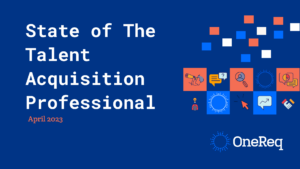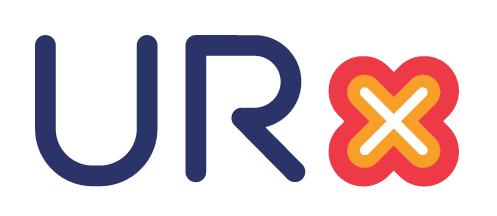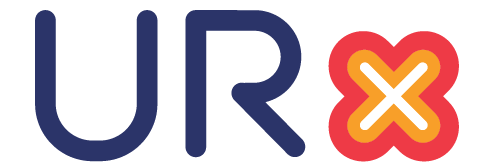BY: Jeremy Lyons
Jeremy Lyons is a Talent Acquisition/Recruiting Operations Leader. You can connect with him on LinkedIn here.This article is a framework that can be used by Recruiters and Sales Hiring Managers to plan and execute the hiring of a Sales Development Representative properly. It will provide an understanding of the role and suggested candidate profile for the Recruiters and an interview plan for the Hiring Managers.
Understanding the Role
A Sales Development Representative, often shortened to SDR, forms the foundation of many sales organizations. SDRs are generally tasked with qualifying new customer leads, warm inbound, and supporting multiple account executives to hit sales targets. The role itself is fantastic early career or transitional talent looking to break into sales as it will teach many of the fundamental traits needed to be successful in a sales career. At companies that also have a Business Development Representative team (focus on outbound sales), the SDR will focus purely on inbound leads.
They may target a specific region or industry depending on the company alignment. In many SaaS business, the BDR/SDR is not a closing role, meaning they are not responsible for the completion of a sale. Metrics around the BDR/SDR role tend to focus on outreach numbers, calls scheduled with account executives. Common tools that the role uses are CRMs (e.g. Salesforce, Oracle), sales execution platforms (e.g. Outreach.io, Hubspot, Groove, Salesloft, Zoominfo), and conversation intelligence tools (e.g. Revenue.io, Gong, Fireflies.ai).
Plan & Prep
Understand the Sales Style
Business-to-Business (B2B) has a different style and structure when compared to Business-to-Consumer (B2C) sales. It is important, as the recruiter, to understand the difference between the two, a loose understanding of the deal structures, and the differing sales tactics/methodologies.
Business Model & Sales Process
Business-to-Business (B2B) sales have a different style and structure when compared to Business-to-Consumer (B2C) sales. Understanding how the SDR will function within the broader Sales organization based on the business model. For example, a B2B company may value professional vocabulary in an SDR as they are likely to be communicating with leads who are senior leaders vs. a B2C company that primarily sells to customers in a direct fashion. Lastly, a general understanding of an organization’s sales process helps greatly with context on how your sales hiring managers are going to evaluate candidates.
Align Interview Process to Real Work
One of the best indicators of real life performance is to ask someone to attempt the work. To that end, give your SDR a real life example like “you received an email from XYZ Company about interest in our product. Write an engaging email cadence that will entice them to take a call to learn more.” The goal is not perfection but instead to see the direction the candidate took and then working with the hiring manager to understand if the candidate is coachable. If you know that the role will require cold calling, you can even build off that exercise and do a role play during the onsite interview.
Candidate Profiles
Given that this is an entry level role, you will likely be hiring for skills rather than professional experience. Some skills to look for are:
- Storytelling
- Resilience
- Coachable
- Organized
- Follow Through
Bonus points can be awarded for prior experience with the sales tools in use.
Interview Plan
Below is an example interview Structure you can use as a template.
Stage One: Intro Call (30-45 minutes)
Standard review of resume and assessment of soft skills
Stage Two: Email Sequence Project
Hiring Manager (or designated team member) should review the email sequence and if it is good, the candidate moves forward. If it isn’t, the candidate could be declined. Another way is to have the review happen during the hiring manager interview.
Stage Three: Hiring Manager Call (45 minutes)
Emphasis of this interview should be to gauge the coachability, curiosity, and perseverance of the candidate. Prior to the interview, the hiring manager should review the email sequence project. A portion of the interview could then be spent going over the email sequence with the candidate and providing feedback.
Stage Four: Onsite (Depending on the Company – 2-3.5 hours with 2-3 parts)
Behavioral Interview (One or two 30 minute interviews)
This can be with a current BDR/SDR, or an Account Executive. The goal is to discuss the day-to-day and what the role is like as well as expectations and ways of working with different partners across the sales team and broader team (product, eng, etc) partnership and expectations.
Mock Qualifying Call (45 Min) *If the role will requires cold calling
15-minutes: Coaching session between the hiring manager and the candidate similar to what would happen in the company. The hiring manager should give the candidate a few questions and things to look for during the call that the candidate can use. The candidate should also have the opportunity to ask questions.
15-minutes: A mock call with the hiring manager acting as the buyer or another BDR/SDR from the team. During the call, the candidate should be evaluated for how they were able to evaluate the customer fit and how quickly they think on their feet.
15-minutes: Coaching session between the hiring manager and candidate to go over the call and give them an honest evaluation/feedback.
Sales Leader (30-45 minutes)
This could happen on the same day or another day and dependent on the organization. At smaller companies, heads of sales groups might want to have a chat with anyone coming into their organization. Consider this interview optional depending on size of company, bandwidth and preferences of sales leaders.
Example Interview Questions
- Tell me about the last time you were rejected for something you really wanted. What did you learn from this experience and what did you do to improve for the next time?
- Have you ever had to cold-call or cold email in a past role? If so, what was the role? Are you comfortable doing X amount of calls per day?
- Have you ever worked in a sales environment before? If so, can you describe your experience and any lessons you learned from it?
- What steps do you typically take to research a potential client or customer before reaching out to them?
- How do you stay organized and manage your time effectively when you have multiple leads to follow up with?
- Can you give me an example of a time when you went above and beyond for a customer or client? What did you do, and what was the outcome?
- What was the last thing you taught yourself how to do?
- Describe a time when you were faced with a challenge with little to no understanding of how to deal with it. What was the situation, how did you overcome it, and what did you learn for the next time?
- When approached with a new tool or process that you are unfamiliar with, how do you go about learning more?
- How would you describe your learning style?
- How do you like to receive feedback?
Hiring Plan is a series that provides frameworks and templates for use when recruiting specific roles.






